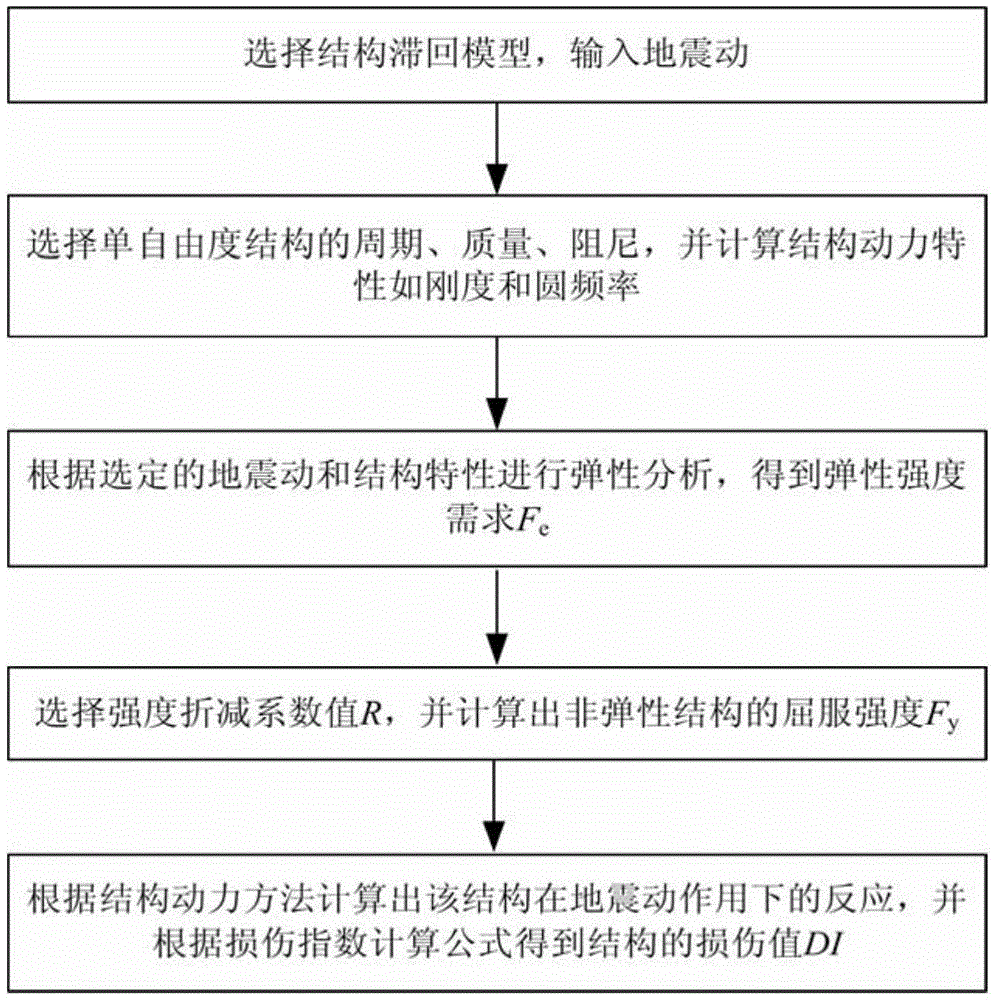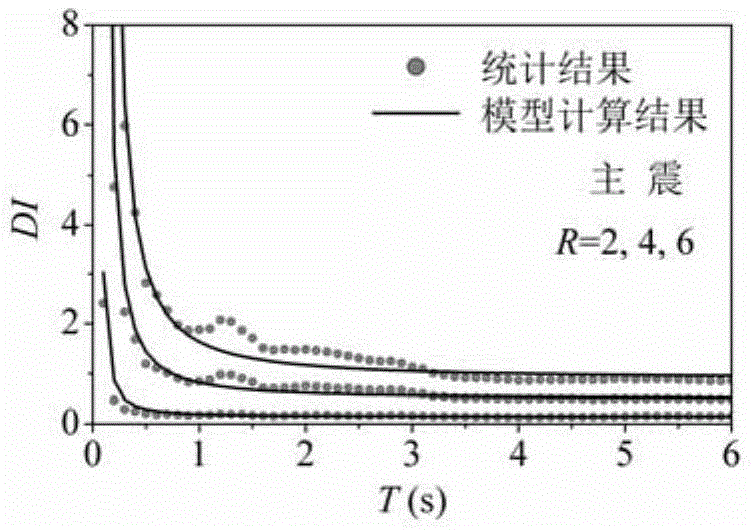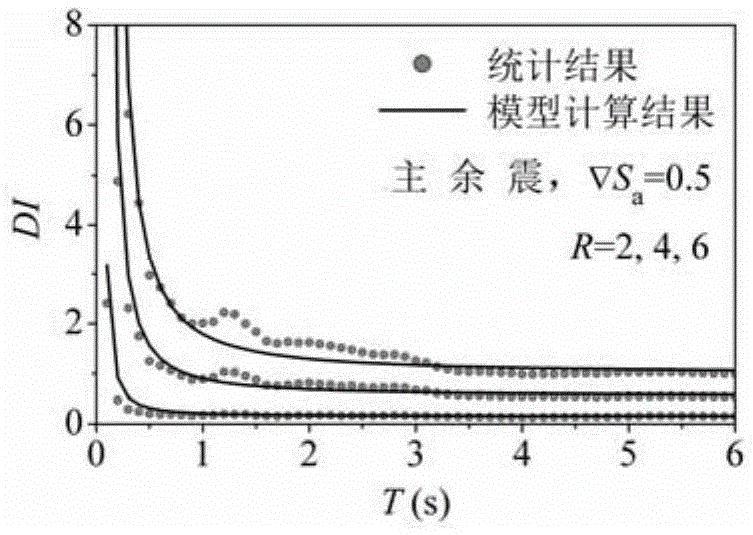Main shock-aftershock sequence-based method for estimating damage index
A damage index and aftershock technology, which is applied in the direction of electrical digital data processing, special data processing applications, instruments, etc., to achieve simple and practical effects
- Summary
- Abstract
- Description
- Claims
- Application Information
AI Technical Summary
Problems solved by technology
Method used
Image
Examples
specific Embodiment approach 1
[0028] Embodiment 1. A damage index evaluation method based on the main aftershock sequence described in this embodiment is carried out in the following steps:
[0029] 1. Select a structural hysteresis model according to the actual ground motion type;
[0030] 2. Select the period, mass, and damping of the single-degree-of-freedom structure, and calculate the dynamic characteristics of the structure;
[0031] 3. Conduct elastic analysis according to the selected ground motion type and structural characteristics, and obtain the elastic strength requirement F e ;
[0032] 4. Select the value of the strength reduction factor R, and calculate the yield strength F of the non-elastic structure y ;
[0033] 5. Calculate the response of the hysteretic model of the structure under the action of the earthquake according to the structural dynamic method, and obtain the damage index DI of the structure according to the damage calculation formula;
[0034] 6. According to the statisti...
specific Embodiment approach 2
[0038] Specific embodiment 2. This embodiment is a further description of the damage index evaluation method based on the main aftershock sequence described in the specific embodiment 1. The hysteresis model described in step 1 is: ideal elastic-plastic model or modified Clough model or pinch model or stiffness-strength degradation model based on the three-parameter model proposed by Park et al.
specific Embodiment approach 3
[0039] Specific Embodiment 3. This embodiment is a further description of the damage index evaluation method based on the main aftershock sequence described in the specific embodiment 1 or 2. The earthquake type described in step 1 is only one main shock or One main shock plus one aftershock or one main shock plus two aftershocks.
PUM
 Login to View More
Login to View More Abstract
Description
Claims
Application Information
 Login to View More
Login to View More - R&D
- Intellectual Property
- Life Sciences
- Materials
- Tech Scout
- Unparalleled Data Quality
- Higher Quality Content
- 60% Fewer Hallucinations
Browse by: Latest US Patents, China's latest patents, Technical Efficacy Thesaurus, Application Domain, Technology Topic, Popular Technical Reports.
© 2025 PatSnap. All rights reserved.Legal|Privacy policy|Modern Slavery Act Transparency Statement|Sitemap|About US| Contact US: help@patsnap.com



